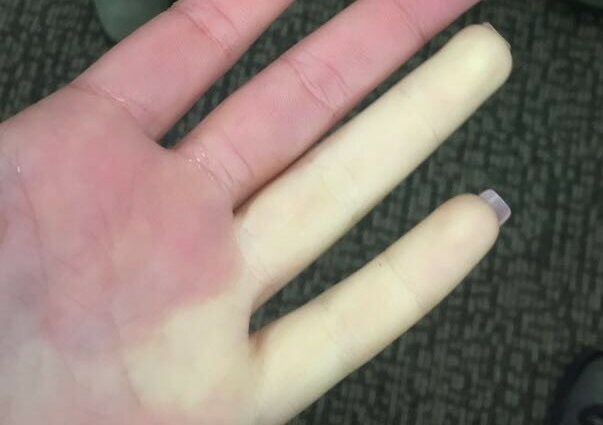Raynaud’s disease
Suffer from Raynaud’s disease or Raynaud’s syndrome, which are two slightly different conditions, it is not just having the hands or cold feet. This is a chronic disorder of blood circulation in the extremities, which occurs periodically, in case of exposure to cold and, more rarely, in case of emotional stress.
The affected parts suddenly become white, cold and sometimes numb or numb, because the blood does not circulate there any more. The disease specifically affects the extremities, most often the fingers (the thumb is usually spared) and the toes, but also, in some cases, the nose, lips and earlobes or even the nipples. A crisis can last from a few minutes to a few hours.
He’s a French doctor, Maurice Raynaud, who first described the manifestations of this disease, in 1862.
How does the body react to cold? Normally, when exposed to cold, the body tries to reduce its heat loss by constricting the small arteries located just under the skin (arterioles), this is called the vasoconstriction. This mechanism reduces the exposure of blood to cold and increases its flow into the deep veins. This helps the body to maintain its internal temperature. In people with Raynaud’s disease, this reaction is excessive. The nerves that control the tightening of the arterioles are hypersensitive and do not cause normal vasoconstriction, but rather a sudden decrease in the caliber of the arteries (what is called a spasms). When the spasm stops, the arterioles dilate again, which restores blood flow.
|
Disease and syndrome: two different conditions
There are 2 forms of the disease depending on the causes.
- The primary form (Raynaud’s disease). It is the most frequent form, either 90% of cases. Most of the time, symptoms are mild : they create an unpleasant sensation, but do not cause damage to the vessels or tissues. It most commonly occurs between‘age 15 and 25. In about two-thirds of cases, the disease resolves on its own after a few years11. Her symptoms have also been found to decrease during pregnancy. The cause of the primary form of Raynaud’s disease is not known.
- The secondary form (Raynaud’s syndrome). This syndrome, also called Raynaud’s phenomenon, is much rarer and generally worse. It is caused by diseases that affect Blood vessels, such as scleroderma.
Certain events – or activities – can also lead to damage to the vessels: frostbite or handling tools that vibrate a lot or that cause repeated impacts to the hands, for example.
Taking certain medications long term can also lead to Raynaud’s syndrome. For more information, see the People at risk section.
Raynaud’s syndrome (secondary form) usually appears around quarantine. Serious cases require specialist medical follow-up in rheumatology.
According to data compiled in different countries, it is estimated that 3% to 5% of the population has Raynaud’s disease or syndrome.6.
Possible complications
In severe cases, which are rare, the permanent decrease in blood flow can lead to deformity of fingers or toes.
If one or more vessels become completely blocked, painful ulcers can appear on the fingertips or even gangrene (tissue death). These two complications, which are difficult to treat, occur mainly in people with scleroderma.










